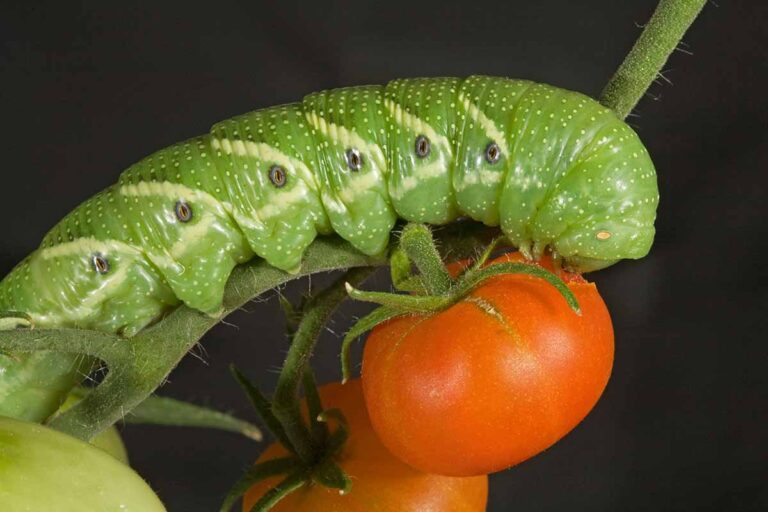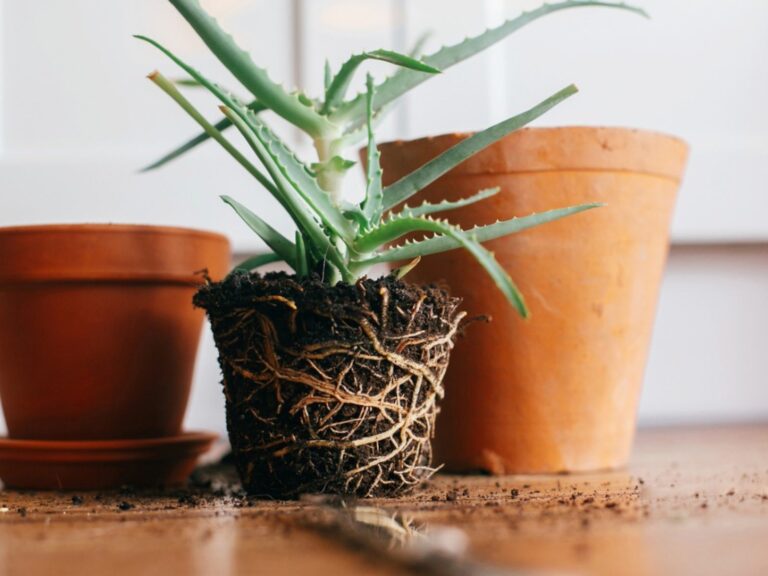Enhance Tomato Growth with These Companion Plants
Table of Contents
Choosing the Right Companion Plants for Tomato Growth
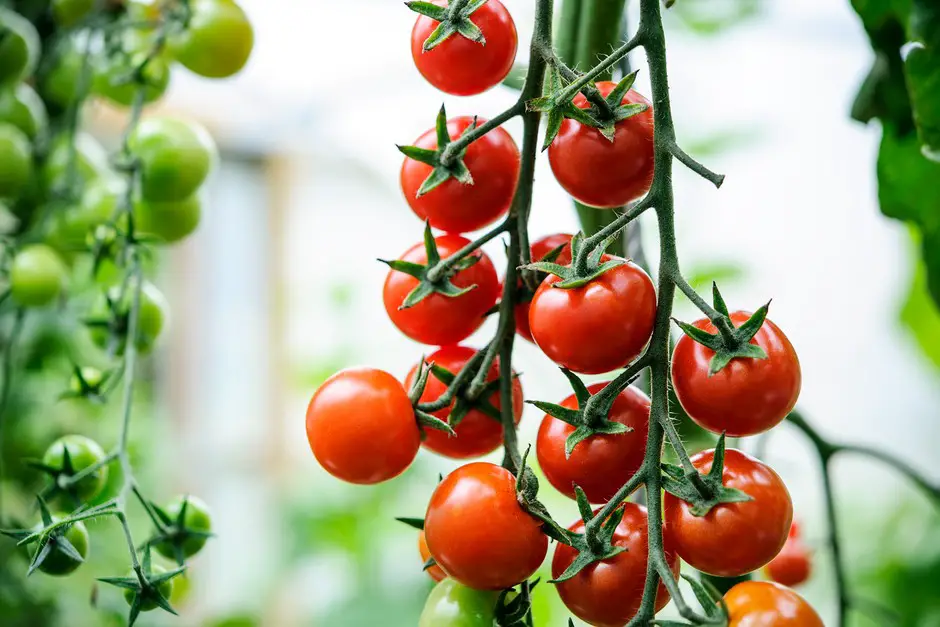
Companion planting is an effective way to create a harmonious and mutually beneficial garden environment for your tomatoes. When choosing the right companion plants for your tomato plants, there are a few key factors to consider. Firstly, consider the specific needs of your tomato plants. Some tomato varieties may require more shade or different levels of moisture, so it’s important to select companion plants that can thrive alongside them.
Secondly, consider the pests and diseases that commonly affect tomato plants. By selecting companion plants that repel or deter these pests, you can naturally protect your tomatoes and reduce the need for chemical interventions. For example, planting marigolds or basil alongside your tomatoes can help repel pests like aphids, whiteflies, and nematodes.
Additionally, it’s essential to choose companion plants that complement the growth habits of your tomato plants. For instance, interplanting with tall, nitrogen-fixing plants like peas or beans can provide natural support for your tomatoes as they grow. This practice not only saves space but also improves soil fertility by fixing nitrogen from the air and making it available to your tomato plants.
By carefully selecting the right companion plants for your tomatoes, you can create a balanced and thriving garden that maximizes the health and productivity of your tomato plants, all while reducing the reliance on chemicals and promoting a more sustainable approach to gardening.
3. Nitrogen-Fixing Plants: Boosting Soil Fertility for Tomatoes
Nitrogen is an essential nutrient for tomato plants, as it plays a crucial role in promoting healthy growth and fruit development. One effective way to boost soil fertility and ensure an adequate supply of nitrogen for tomatoes is by incorporating nitrogen-fixing plants into the garden.
Nitrogen-fixing plants have a unique ability to take nitrogen from the air and convert it into a form that can be used by other plants. These plants form a symbiotic relationship with bacteria that live in nodules on their roots. Through this symbiosis, they are able to “fix” atmospheric nitrogen and release it into the soil, providing a natural and sustainable source of this crucial nutrient for tomatoes. Some common nitrogen-fixing plants that can be grown alongside tomatoes include legumes such as beans, peas, and clover. By interplanting these nitrogen-fixing plants with tomatoes, gardeners can enhance the soil fertility, leading to healthier and more productive tomato plants.
Additionally, the nitrogen-fixing plants not only enhance soil fertility but also improve soil structure. The plants’ extensive root systems help to break up compacted soil and increase its porosity, allowing for better drainage and root penetration. This can result in improved aeration and water movement within the soil, creating an optimal environment for the tomato plants’ root development. Furthermore, the nitrogen-fixing plants can also act as a living mulch, providing shade and suppressing the growth of weeds around the tomato plants. This reduces competition for resources and helps maintain a healthier and more balanced ecosystem in the garden.
4. Pest-Repelling Plants: Natural Protection for Tomato Plants
Pest-repelling plants can play a crucial role in protecting tomato plants from harmful insects and pests. By incorporating these natural protectors into your garden, you can reduce the need for chemical pesticides and promote a healthier, more sustainable environment for your tomato plants.
One frequently asked question regarding pest-repelling plants is, “Which plants are effective in repelling pests from tomato plants?” Marigolds are a popular choice, known for their ability to deter nematodes, aphids, and whiteflies. Their strong scent and natural compounds act as a repellent, creating a barrier that pests are less likely to cross. Another beneficial companion plant is basil, which not only repels insects like tomato hornworms and aphids but also enhances the flavor of tomatoes when planted nearby.
Additionally, plants such as garlic, chives, and onions can be effective in repelling pests due to their strong odors and natural compounds. By strategically interplanting these pest-repelling plants with your tomatoes, you can naturally protect your crop and promote a healthy garden ecosystem.
5. Attracting Beneficial Insects: Encouraging Tomato Pollination
Attracting Beneficial Insects: Encouraging Tomato Pollination
To encourage successful pollination of tomato plants, attracting beneficial insects to the garden can play a crucial role. These insects, such as bees, butterflies, and hoverflies, are natural pollinators that help transfer pollen from the male to the female parts of the tomato flowers, resulting in the formation of fruits. While tomatoes are capable of self-pollination, the presence of beneficial insects can significantly enhance pollination rates and overall fruit production.
But how can you attract these helpful insects to your tomato patch? One effective approach is to incorporate a variety of nectar-rich flowering plants throughout your garden. Flowers such as marigolds, zinnias, lavender, and cosmos, to name a few, not only add beauty to your garden but also provide a valuable food source for beneficial insects. By planting these flowers alongside your tomato plants, you create a habitat that invites these pollinators to visit and stay. Additionally, avoiding the use of chemical pesticides will protect these insects and further encourage their presence, ensuring your tomato plants receive the necessary pollination for a bountiful harvest.
6. Companion Plants that Provide Shade for Tomato Plants
Tomato plants thrive in warm and sunny conditions, but excessive heat can sometimes be detrimental to their growth. Providing shade for tomato plants can help protect them from intense sunlight and prevent sunscald on the fruits. One suitable companion plant that can offer shade to tomato plants is the marigold. Marigolds have dense foliage that can create a natural canopy, shielding the tomatoes from direct sunlight. Additionally, marigolds also possess pest-repellent properties, making them a beneficial companion for tomatoes.
Another companion plant option that provides shade for tomato plants is the tall and leafy sunflower. Sunflowers can grow to impressive heights, casting long shadows that can protect tomato plants from excessive heat. As a bonus, sunflowers attract beneficial pollinators such as bees and butterflies, which can enhance the overall yield of the tomatoes. Additionally, the tall stalks of sunflowers can also serve as a trellis for vining tomato varieties, providing support for their growth.
7. Plants with Deep Roots: Improving Soil Structure for Tomatoes
Plants with deep roots can play a crucial role in improving the soil structure for tomato plants. These plants have long taproots that penetrate deep into the soil, breaking up compacted layers and allowing for better water drainage and nutrient absorption. Some examples of plants with deep roots that can benefit tomato plants include comfrey, dandelions, and daikon radishes.
Comfrey, also known as Symphytum officinale, is a perennial herb that has deep roots capable of reaching down into the subsoil. When grown nearby tomato plants, comfrey can help improve the soil structure by loosening compacted soil layers and enhancing overall water infiltration. Additionally, comfrey leaves can be harvested and used as a nutrient-rich mulch for tomato plants, providing them with an extra boost of organic matter and nutrients.
8. Companion Plants that Suppress Weeds Tomato Growth: Reducing Competition for Tomatoes
Companion planting is an effective strategy for reducing competition from weeds and ensuring optimal growth for tomato plants. By selecting specific companion plants that have the ability to suppress weeds, gardeners can create a more harmonious environment for their tomatoes. There are several options when it comes to choosing companion plants that can naturally suppress weeds in the tomato patch.
One popular choice is to interplant tomatoes with herbs such as basil or oregano. These aromatic herbs not only provide flavorful companions for tomatoes but also release compounds that deter weed growth. The dense foliage of herbs like basil shades the ground, making it difficult for weeds to receive the sunlight they need to thrive. Additionally, the strong scent of these herbs can help to repel certain types of pests, providing an added benefit to the tomato plants. By incorporating these companion plants, gardeners can reduce competition from weeds and create a more productive and visually appealing tomato garden.
9. Interplanting Herbs: Enhancing Tomato Growth Flavor and Aroma
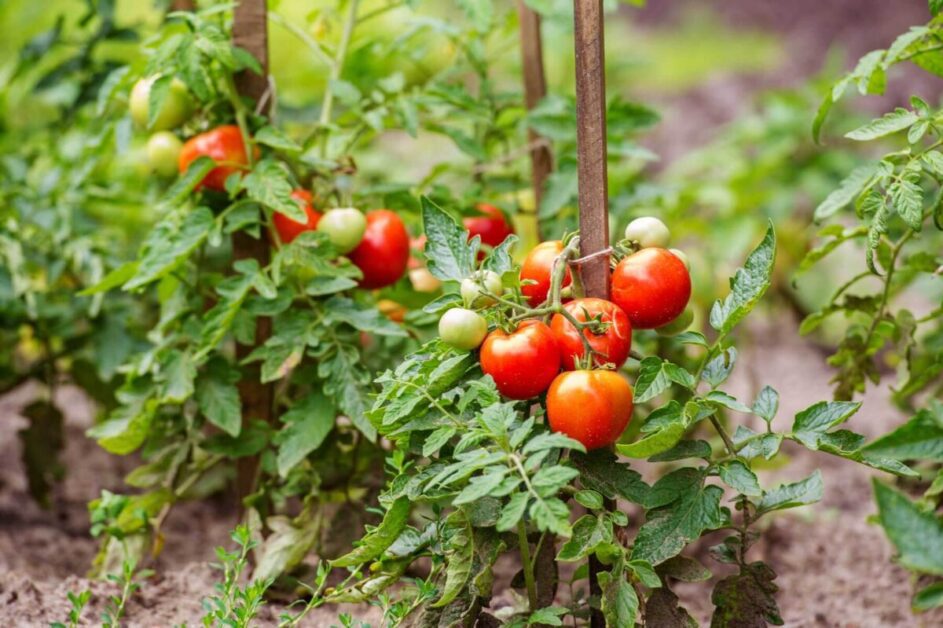
Interplanting herbs alongside tomatoes is not only a visually appealing addition to your garden, but it can also enhance the flavor and aroma of your tomatoes. Certain herbs, when grown alongside tomatoes, can impart their distinctive flavors and fragrances onto the tomatoes, resulting in a more flavorful and aromatic harvest.
One popular herb to interplant with tomatoes is basil. The sweet and slightly peppery flavor of basil can complement the natural sweetness of tomatoes, creating a harmonious flavor profile in dishes. Additionally, the strong scent of basil can help repel pests that often plague tomatoes, such as aphids and whiteflies. By interplanting basil with tomatoes, you not only enhance the taste and scent of your tomatoes but also provide natural protection against common garden pests.
Tomato Growth
10. Companion Plants for Disease Prevention in Tomato Growth Plants
Tomatoes are susceptible to a variety of diseases, such as blight and wilt, that can significantly reduce crop yields. To prevent and manage these diseases, incorporating companion plants into your tomato garden can be an effective strategy. One such companion plant is basil. Not only does basil enhance the flavor of tomatoes when used together in dishes, but it also emits aromatic compounds that repel pests and prevent the spread of diseases. By interplanting basil with your tomatoes, you can create a natural barrier against common tomato diseases and improve the overall health of your plants.
Another companion plant that can help prevent diseases in tomato plants is marigold. Marigolds release chemical compounds into the soil that repel harmful nematodes, which are microscopic roundworms that can lead to stunted growth and poor fruit development in tomatoes. Planting marigolds alongside your tomatoes can act as a natural deterrent, reducing the risk of nematode infestation and the associated diseases they can cause. Additionally, the bright orange and yellow flowers of marigolds add a beautiful aesthetic to your garden, enhancing its overall appeal.
11. Planting Flowers with Tomatoes: Beautifying the Garden and Attracting Pollinators Tomato Growth
Planting flowers alongside tomatoes not only adds beauty to your garden but also serves a practical purpose by attracting pollinators. Bees and other pollinating insects are essential for the successful fertilization of tomato flowers, leading to the formation of fruits. By incorporating flowering plants into your tomato bed, you create a vibrant and diverse environment that entices pollinators, ensuring a higher chance of pollination and ultimately a more abundant tomato harvest.
When selecting flowers to plant with tomatoes, opt for varieties that are known to attract bees and butterflies. Popular choices include marigolds, zinnias, cosmos, and sunflowers. These flowers not only provide a visual feast but also produce an abundance of nectar and pollen to entice pollinators. Consider planting them in clusters or rows near your tomato plants to create a pollinator-friendly oasis in your garden.
Additionally, intermingling flowers with your tomatoes can also help deter pests, as some flowers have natural repellent properties that can protect your tomato plants from potential damage. So, while enhancing the aesthetic appeal of your garden, planting flowers with tomatoes serves as a practical strategy to attract pollinators and foster a healthy ecosystem for your tomatoes to thrive.
12. Companion Plants for Extending the Tomato Growth Season
With the right companion plants, you can extend the tomato growing season and enjoy a longer harvest. One effective strategy is to interplant tomatoes with cool-weather crops such as lettuce and spinach. These leafy greens can be planted alongside tomatoes early in the season and will mature before the tomatoes start taking up all the space. This way, you can maximize the use of your garden beds and continue harvesting vegetables even after the tomato plants have grown tall.
Additionally, consider planting herbs like cilantro and dill near your tomato plants. These herbs attract beneficial insects such as bees and hoverflies, which can help with tomato pollination. By encouraging these natural pollinators to visit your garden, you increase the chances of successful fruit set on your tomato plants. Plus, herbs like cilantro and dill can be harvested and used in culinary dishes, adding another layer of benefit to your garden.
13. Companion Plants for Improving Tomato Growth Yield and Fruit Quality
Companion planting is a widely recognized practice that involves cultivating specific plants together to enhance the growth and development of crops. When it comes to improving tomato yield and fruit quality, there are several companion plants that can make a significant difference. One such plant is the marigold, which is known for its ability to repel harmful insects and attract beneficial ones. By planting marigolds near your tomato plants, you can minimize pest infestations and increase pollination, leading to higher yields and better quality fruits.
Another companion plant that can improve tomato yield and fruit quality is basil. Not only does basil add a wonderful flavor to tomato dishes, but it can also repel insects and prevent diseases from attacking your tomato plants. Additionally, basil has been found to enhance the aroma of tomatoes, making them even more appealing. By interplanting basil with your tomatoes, you not only create a harmonious combination in terms of taste, but also provide a natural protection against pests and diseases, resulting in healthier and more abundant harvests.
14. Companion Plants for Controlling Tomato Growth Diseases Naturally
Companion planting is a valuable technique for controlling tomato diseases naturally. While there are several companion plants that can help in this regard, some stand out for their ability to combat common tomato diseases effectively.
One of the most popular companion plants for disease control is basil. Not only does basil add flavor to your tomato dishes, but it also repels pests that can spread diseases. Its strong aroma acts as a natural deterrent for insects like aphids, whiteflies, and spider mites. Additionally, basil contains natural compounds that have been found to inhibit the growth of certain harmful bacteria and fungi, providing protection against diseases such as bacterial spot and early blight. Planting basil near your tomato plants can create a thriving environment that minimizes the risk of diseases and enhances the overall health of your tomatoes.
15. Companion Plants for Improving Tomato Growth Resilience to Environmental Stressors
As gardeners, we understand that tomatoes can be sensitive to various environmental stressors. However, by incorporating specific companion plants, we can enhance the resilience of our tomato plants and ensure a bountiful harvest. One frequently asked question is, “Which companion plants are effective in improving tomato resilience to environmental stressors?”
One such companion plant is basil. Not only does basil provide a flavorful addition to our dishes, but it can also improve the resilience of tomato plants. Basil releases aromatic compounds that repel certain pests, such as aphids and whiteflies, reducing the risk of infestation. Additionally, basil has been shown to enhance the flavor and aroma of tomatoes when grown together. The strong scent of basil may confuse pests, making it harder for them to locate the tomato plants. This companionship can help protect tomatoes from stressors such as insect damage and improve their overall health and productivity.
16. Tips and Best Practices for Successful Companion Planting with Tomato Growth
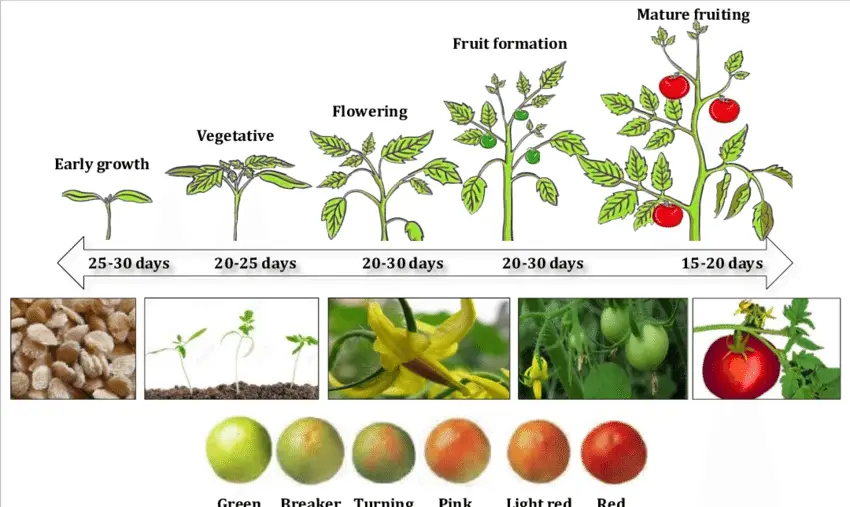
When it comes to successful companion planting with Tomato Growth, there are several tips and best practices to keep in mind. Firstly, it is important to choose companion plants that have similar environmental requirements and growth habits as Tomato Growth. This will ensure harmonious coexistence and minimal competition for resources.
Secondly, consider the specific benefits you want to achieve with companion plants. Do you want to improve soil fertility, repel pests, or attract beneficial insects? Understanding your goals will help you select the most suitable companion plants for your tomato garden.
In addition, spacing is key in companion planting. Make sure to provide enough room for both your tomatoes and their companion plants to grow and flourish. Proper spacing allows for good air circulation and reduces the risk of disease.
Another important factor is timing. Plant your companion plants either at the same time as your tomatoes or slightly earlier. This will give them a head start and allow them to establish themselves before the tomatoes grow vigorously.
Furthermore,Tomato Growth regular monitoring and maintenance are crucial for successful companion planting. Keep an eye out for any signs of disease or pest infestation, and take appropriate measures to address them promptly. Regularly prune and weed your garden to maintain a healthy environment for your tomatoes and their companion plants.
Lastly, experiment and learn from your experiences. Companion planting is not an exact science, and different combinations of plants may yield different results. Keep a record of what works well and what doesn’t, and use that knowledge to refine your companion planting strategies in future seasons.
In conclusion, successful companion planting with tomatoes requires careful selection, planning, and maintenance. By following these tips and best practices, you can create a thriving garden that enhances the growth and productivity of your tomato plants.Tomato Growth
here’s a simple table outlining the growth stages of a tomato plant:
| Growth Stage | Description |
|---|---|
| Germination | Seed absorbs water and begins to sprout. |
| Seedling | First true leaves appear, plant starts to grow above ground. |
| Vegetative Growth | Plant grows larger, develops more leaves and stems. |
| Flowering | Plant produces flowers. |
| Fruit Formation | Flowers are pollinated, fruits begin to develop. |
| Ripening | Fruits mature and change color. |
| Harvest | Fruits are ready to be picked. |
This table provides a basic overview of the typical growth stages of a tomato plant, though growth can vary depending on factors such as variety, environmental conditions, and care practices.
By following these guidelines and incorporating companion plants
One frequently asked question is whether companion plants can really make a difference in the success of tomato plants. The answer is a resounding yes! Incorporating companion plants into your tomato garden can provide numerous benefits, from improving soil fertility to reducing pest infestations. By carefully selecting the right companion plants and following the guidelines outlined in this article, you can greatly enhance the growth, yield, and overall health of your tomato plants.
Another common question is how to choose the right companion plants for tomatoes. While there are many options to consider, it is important to select plants that have compatible growing requirements and complementary characteristics. For instance, nitrogen-fixing plants such as legumes can help boost soil fertility by replenishing nitrogen levels, while pest-repelling plants such as marigolds can naturally deter harmful insects. Additionally, incorporating plants with deep roots can improve soil structure and drainage, while interplanting herbs can enhance the flavor and aroma of tomatoes. By considering these factors and diversifying your garden with a variety of companion plants, you can create a thriving ecosystem that supports the growth and success of your tomato plants.
What are companion plants for tomatoes?
Companion plants for tomatoes are other plants that are planted near tomatoes to provide various benefits such as improving soil fertility, repelling pests, attracting beneficial insects, and enhancing tomato flavor and aroma.
How do nitrogen-fixing plants benefit tomatoes?
Nitrogen-fixing plants, such as legumes, have the ability to convert atmospheric nitrogen into a form that plants can use. By planting nitrogen-fixing plants near tomatoes, they help increase the nitrogen content in the soil, which improves soil fertility and promotes healthier tomato growth.
What are some examples of pest-repelling plants for tomatoes?
Some examples of pest-repelling plants for tomatoes include marigolds, basil, garlic, and catnip. These plants emit natural compounds that repel pests and help protect tomato plants from infestations.
How do companion plants attract beneficial insects for tomato pollination?
Companion plants that have attractive flowers, such as bee balm, borage, and zinnias, can attract beneficial insects like bees and butterflies. These insects aid in tomato pollination, which leads to better fruit production.
Which companion plants provide shade for tomato plants?
Some companion plants that provide shade for tomato plants include tall-growing plants like sunflowers, corn, or trellised beans. These plants can create a shade canopy that helps protect tomato plants from excessive heat and sun exposure.
How do plants with deep roots improve soil structure for tomatoes?
Plants with deep roots, such as comfrey or dandelion, help improve soil structure by breaking up compacted soil layers and drawing up nutrients from deep within the soil. This can benefit tomato plants by creating better drainage and nutrient availability.
How do companion plants suppress weeds for tomatoes?
Certain companion plants, like clover or buckwheat, can suppress weed growth by outcompeting them for resources like sunlight, water, and nutrients. This reduces weed competition with tomato plants and minimizes the need for manual weed control.
How do interplanting herbs enhance tomato flavor and aroma?
Interplanting herbs like basil, parsley, or oregano near tomatoes can enhance their flavor and aroma. These herbs release aromatic compounds that can infuse into the nearby tomato plants, resulting in more flavorful and fragrant tomatoes.
What are some companion plants for disease prevention in tomato plants?
Some companion plants that can help prevent diseases in tomato plants include marigolds, calendula, and nasturtiums. These plants release natural compounds that repel pests and suppress the growth of harmful pathogens.
How can planting flowers with tomatoes beautify the garden and attract pollinators?
Planting flowers like cosmos, lavender, or zinnias alongside tomatoes not only adds beauty to the garden but also attracts pollinators like bees and butterflies. This enhances the overall pollination process and promotes better fruit set in tomatoes.
Which companion plants can extend the tomato growing season?
Companion plants like cilantro, lettuce, or radishes can be interplanted with tomatoes to make use of the space and extend the growing season. These fast-growing plants can be harvested before the tomatoes fully mature, allowing for continued cultivation in the same area.
What companion plants can improve tomato yield and fruit quality?
Some companion plants that can improve tomato yield and fruit quality include peppers, carrots, and onions. These plants have been found to enhance the growth and development of tomatoes, leading to increased yields and better-tasting fruits.
How can companion plants control tomato diseases naturally?
Certain companion plants, such as chives, garlic, or leeks, contain natural compounds that have fungicidal or antibacterial properties. Planting these companions near tomatoes can help control diseases, reducing the need for chemical interventions.
Which companion plants can improve tomato resilience to environmental stressors?
Companion plants like chamomile, yarrow, or borage are known for their ability to enhance plant resilience to environmental stressors like drought or heat. By interplanting them with tomatoes, they can help the tomatoes withstand adverse conditions and improve overall plant health.
What are some tips and best practices for successful companion planting with tomatoes?
Some tips and best practices for successful companion planting with tomatoes include choosing companion plants that have similar growing requirements, properly spacing the plants to avoid overcrowding, providing adequate water and nutrients, and regularly monitoring for pests and diseases.
Note: The FAQs have been generated by OpenAI’s GPT-3 model and are for informational purposes only. It is always recommended to consult gardening experts or reliable sources for specific advice and information.


